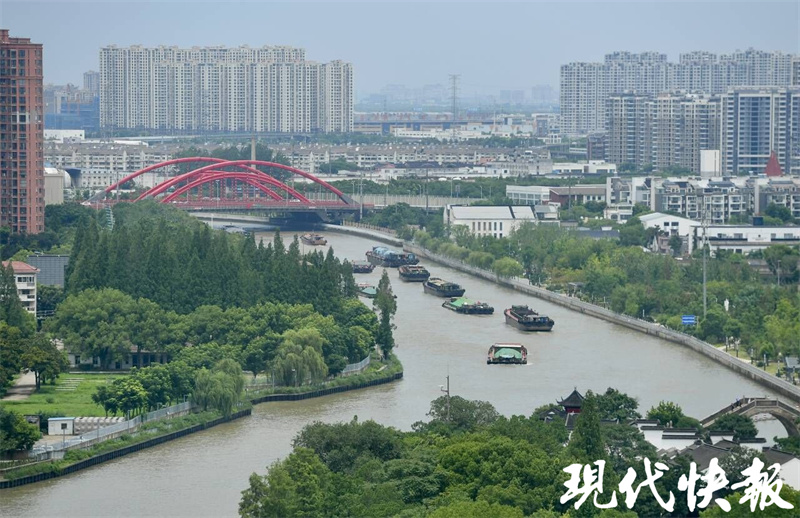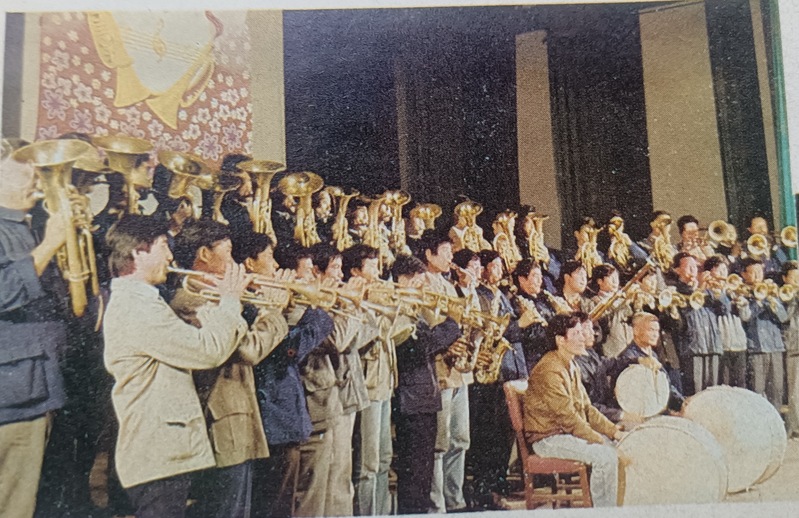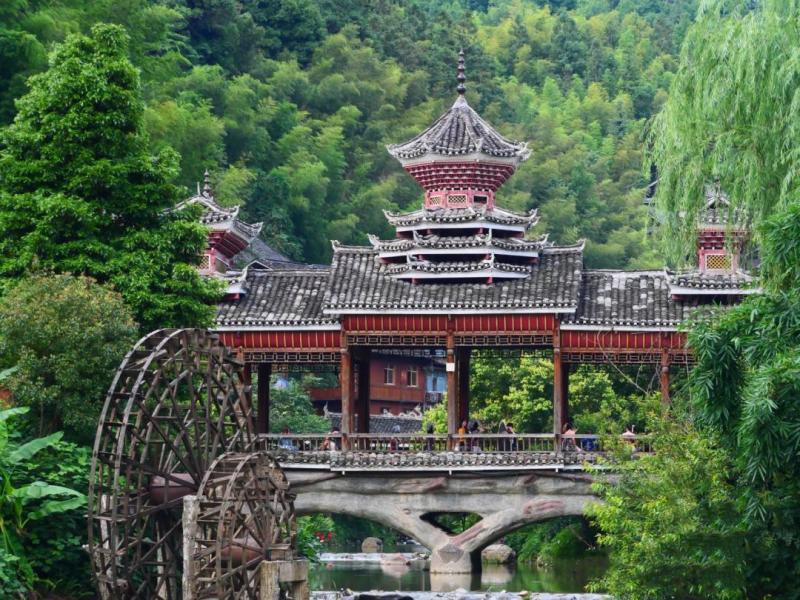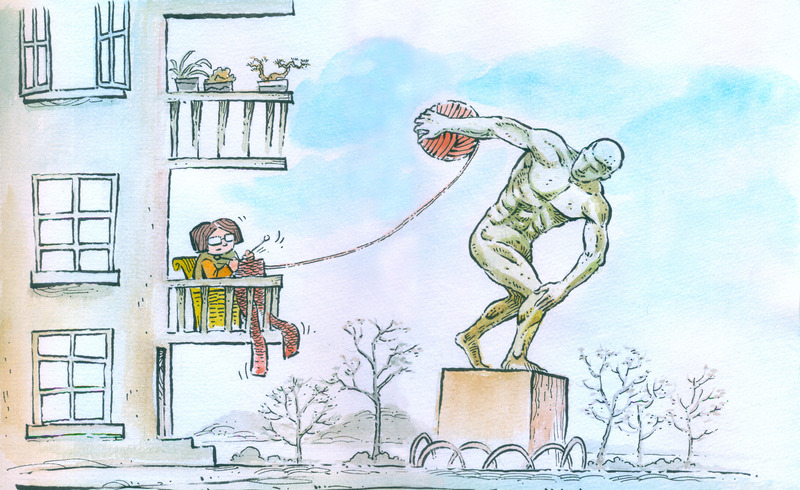"The Light of Domestic Products" and its Artist Friends Leaving Many Tales, China's First Oil Painting Pigment Was Born in Shanghai
Recently, more than 50 works by famous artists such as Liu Haisu, Xie Zhiliu, and Zhu Dequn have gathered at the Jinshan District Museum in Shanghai. These influential figures in the history of Chinese art have a common friend - "Marley".
Entering the special exhibition "National Light - Centennial Mali and Her Artist Friends", let us understand the development process of Chinese art reflected by the century long history of this national pigment brand.
Exploring the "Surroundings" of Pioneers in Maritime Art
Entering the exhibition hall of "The Light of the Nation - Centennial Mali and Her Artist Friends" at the Jinshan District Museum, it feels like opening a special brief history of Chinese modern and contemporary art.
The lifelike tiger depicted by Zhang Yuguang and his later paintings of cranes are rare to see. Both of these works exude a strong traditional Chinese style, with vivid colors and compositions.

Works of Zhang Yuguang
Some viewers may not be familiar with the name Zhang Yuguang, but they must have heard of Shanghai Art School. On November 23, 1912, the Shanghai Academy of Fine Arts, co founded by Liu Haisu, Wu Shiguang, Zhang Yuguang, Wang Yachen, and others, was established on Zhapu Road in Hongkou District. This school was later renamed Shanghai Art College, abbreviated as Shanghai Art College. In an era where many people did not yet know what "art" was, the birth of this new type of school with modern art education concepts marked the opening of the first page in the history of modern art education in China.
In 1914, when Zhang Yuguang was appointed as the second president of the Shanghai Academy of Fine Arts, he was only 29 years old. He was born in Guangdong in 1885 and has loved drawing since childhood. At the age of 15, he came to Shanghai Beach to explore and went to the Tushanwan Painting Museum in Xujiahui to learn Western painting. Afterwards, he worked as a set painter, art teacher, and also drew comics for newspapers, becoming a well-known painter active in the commercial field in Shanghai.
In May 1919, Zhang Yuguang, along with nine painters, educators, entrepreneurs, and other professionals from all walks of life, founded the Mali Craft Factory, marking the beginning of the entrepreneurial journey of domestic pigments. The 10 founders chose a ten stroke "horse" character, which means "success on horseback", and also chose a "benefit" character, hoping that this pigment factory can "benefit the country and the people", allowing Chinese people to use their own cheap and high-quality pigments. The predecessor of Shanghai Marley Painting Materials Co., Ltd., Marley Craft Factory, was born today.
"The emergence of Mali not only embodies the expectations of the Chinese people for having national art pigments, but also is a product of the Shanghai urban spirit of integrating Chinese and Western cultures, being open and inclusive, not bound by conventions, daring to explore, and seeking change and innovation." Zhang Lixing, the curator of this exhibition and vice chairman of the Shanghai Literary Critics Association, told reporters.

Ge Xianglan designed the "double horse head" for Mali
At the beginning of its establishment, Mali Craft Factory successfully developed China's first bottle of advertising color pigment. In 1920, China produced its first watercolor pigment. Afterwards, China's first oil painting pigment, China's first crayon, China's first flexible tube traditional Chinese painting pigment, and China's first acrylic painting pigment were successively born in Mali. The double horse head logo designed by painter Ge Xianglan carries the artistic memories of generations of ordinary Chinese people.
Just as Mali was achieving one "number one" in the history of Chinese pigments, Zhang Yuguang did not stop pursuing art. He delved into Western painting from European teachers and his works were exhibited and won awards at the National Museum of France, the Berlin Academy of Art in Germany, the Kinmen Museum in the United States, and the Panama World Expo. He also played around with his painting career and was invited to work as an art director at a film company, boldly innovating in stage and film and television settings.
After the establishment of the People's Republic of China, he was hired as one of the first painters at the Shanghai Chinese Academy of Painting. In his later years, Zhang Yuguang preferred to paint Chinese painting. He could always blend Chinese and Western painting techniques perfectly, making his paintings full of natural charm.
In 1983, Xie Zhiliu created a trial pen for Shanghai Fine Arts Pigment Factory

Chinese painting in blue and white
In the exhibition hall, there is a flower artwork by Chinese painting master Xie Zhiliu, whose elegant and timeless colors are unforgettable. This was created by him in 1983 using the newly developed Huaqing color from Shanghai Fine Arts Pigment Factory.
After the establishment of the People's Republic of China, Mali Craft Factory and Jincheng Craft Society merged to form Shanghai Art Pigment Factory. In the 1980s, Shanghai Fine Arts Pigment Factory encountered difficulties in developing advanced Chinese painting pigments, and the brightness and color of indigo caused widespread discussion among painters, but there was no consensus yet. In the end, Xie Zhiliu suggested using the traditional Chinese painting blue and white used by his teacher, Mr. Zhang Daqian, as the standard. The technical personnel of Shanghai Art Pigment Factory have conducted multiple experiments and finally developed a satisfactory anthocyanin color.
Paints are the "weapons" of painters. In the history of world art, the innovation of pigments has repeatedly driven the revolution of art. From the 14th to the 16th century, egg colored paintings mixed with egg yolk or egg white pigments created a lasting history of frescoes during the Renaissance period. Afterwards, oil painting gradually replaced egg color painting. After the Industrial Revolution, the emergence of tubular pigments, portable color palettes, and easels propelled Impressionist painters such as Monet to leave their studios and go outdoors to sketch, creating many masterpieces of light and shadow.
After Western painting was introduced to China, many artists participated in the improvement and development process of Chinese people's own pigments - Marley. They achieved mutual success and left behind many good stories. This special exhibition showcases a group of works created by painters such as Lu Yanshao, Tang Yun, Wang Geqian, Wu Changye, and Zhu Qizhan during various periods to test the new pigments of Shanghai Fine Arts Pigment Factory.

In 2004, Marley Company received a letter from painter Han Meilin asking if Marley Company could develop a new pigment with a halo dyeing effect. In the following three years of research and development, Han Meilin tried his pen dozens of times. He annotated words such as "good," "almost," and "can" in small script for technical personnel to refer to. With the close cooperation of the two, Chinese ink and color painting pigments were born.
Han Meilin created a trial pen for Mali's ink color pigments
There are also many calligraphy works with stories in the exhibition hall. In 1987, the first Chinese Oil Painting Exhibition was held in Shanghai, where renowned artists such as Jin Shangyi, Zhan Jianjun, and Luo Gongliu came to participate. Shanghai Art Pigment Factory takes this opportunity to have discussions with artists and listen to their suggestions. After the symposium, the famous painter Luo Gongliu inscribed the name "Friend of Painters" for Shanghai Fine Arts Pigment Factory.
Liu Haisu's "Chinese Painting Pigments", Liu Kaiqu's "To do a good job, one must first sharpen one's tools", Yu Youren's "Illuminating China", Xu Beihong's "Radiance and Glory", Lin Fengmian's "Advocating for Domestic Products and Recovering Spillover Rights", and Wang Yachen's "Light of Domestic Products" all confirm the profound friendship between artists and Mali. It can be said that a century long history of Mali is also a vivid portrayal of the development process of Chinese art.
"Friends of Painters" by Luo Gongliu

From a distance, it looks like Western painting, and up close, it looks like Chinese painting
In this special exhibition, in addition to appreciating the traditional Chinese paintings of Guan Liang, Liu Danzhai, Cheng Shifa, Ying Yeping, Lin Ximing, Huang Zhou, Wang Guanqing, Han Meilin, Chen Jialing, and others, there are also 20 Western paintings with deep roots in Mali that are also worth savoring. Painters such as Zhu Dequn, Zhou Bichu, Yu Xiaofu, Chen Junde, and Wei Jingshan express their artistic explorations and unique reflections on the various aspects of life through their brushes and Mali pigments.
In the exhibition hall, there is a painting of "Glory" gifted by Zhu Dequn to Mali in 2005, which has caused many viewers to stop for a long time. Zhu Dequn is considered one of the most successful painters to blend the delicacy of Eastern art with the intensity of Western painting. In the words of his close friend and painter Wu Guanzhong, Zhu Dequn's paintings are "Western paintings at a distance and Chinese paintings at a close distance.".
In 1920, Zhu Dequn was born into a family of doctors. In 1935, he was admitted to the National Hangzhou Art College, where Lin Fengmian served as the principal. He learned Western painting from Wu Dayu and traditional Chinese painting from Pan Tianshou. In 1937, the full-scale outbreak of the War of Resistance Against Japan forced Hangzhou Art School to relocate inland. After more than sixty years, Zhu Dequn still remembers the turbulent and wandering years: "At that time, many things couldn't be brought, but in my carry on luggage, there was always the painting paint of the Marley brand."
In 1955, Zhu Dequn, who was obsessed with Impressionist painting, decided to develop his career in the hometown of Impressionism, Paris. When visiting the retrospective exhibition of French painter Stahl at the Paris Museum of Fine Arts, Stahl was greatly impressed by his fusion of abstract and concrete art style. Afterwards, he no longer painted tangible landscapes, flowers and birds, plants and characters, but instead expressed his philosophy and ideals in abstract form. From his abstract paintings, one can read the bird songs of spring mountains, the pouring summer rain, the refreshing autumn breeze, and the misty winter sky, all of which are the life insights and emotional expressions accumulated by the Chinese people for thousands of years.

Li Yongsen's Watercolor Paintings
Curator Zhang Lixing told reporters that there is also a rare watercolor painting by Li Yongsen in this special exhibition. Li Yongsen, born in 1898, was one of the pioneers of Chinese watercolor painting. Throughout his more than 80 year artistic career, he has been engaged in the creation, research, and teaching of watercolor painting. In Li Yongsen's view, there are similarities between traditional Chinese painting and watercolor painting. In the process of creation, water content needs to be controlled. He often blends watercolor and traditional Chinese painting techniques, and his works are full of strong Chinese style. This master of Shanghai style watercolor painting was still sketching from life until he was in his 80s, using his brush to record many beautiful moments of the city of Shanghai.
Li Yongsen and sculptor Zhang Chongren are close friends. Although Zhang Chongren is famous for his sculptures, his watercolor paintings are also very outstanding. When they were young, the two often made plans to go out to the wild to sketch and explore the combination of Chinese and Western painting. Li Yongsen once recalled during his lifetime, "My watercolor painting techniques have made rapid progress under the guidance of my elder brother." In this exhibition, a watercolor painting by Zhang Chongren also appeared, with the fish in the painting full of vitality. The works of two old friends unexpectedly met in this exhibition.




